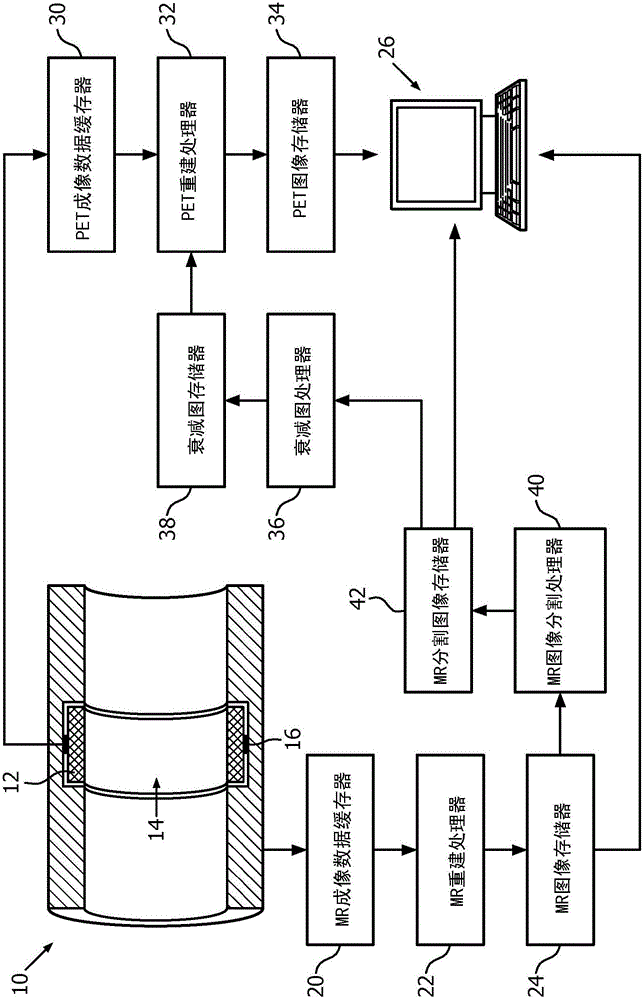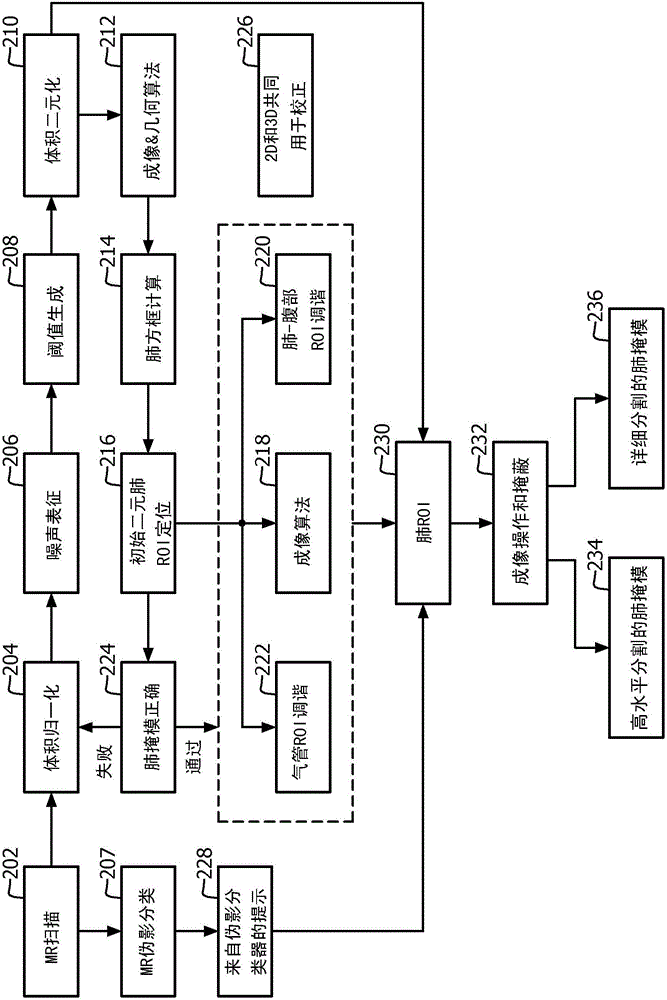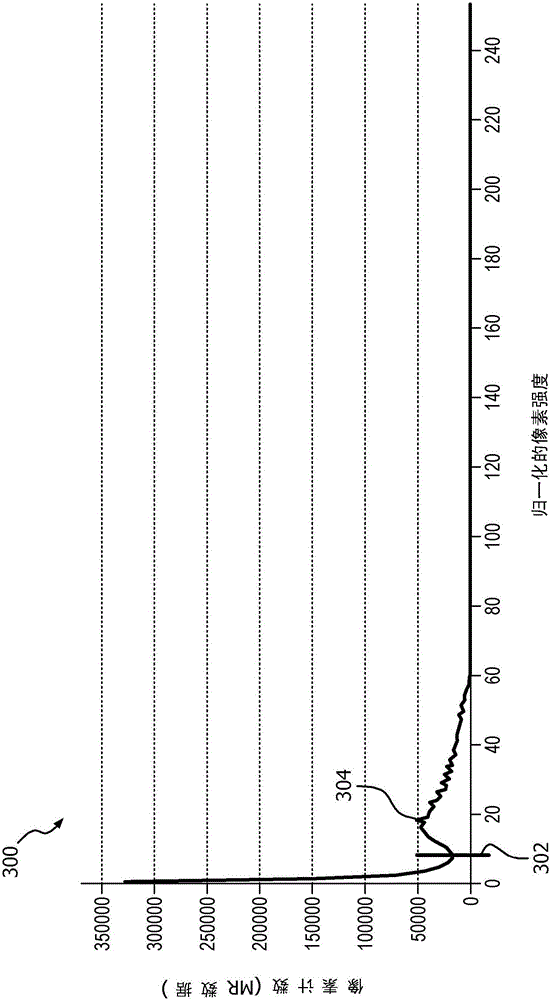Density guided attenuation map generation in PET/MR systems
A dense, modular system technology used in medical imaging to solve problems such as incorrect segmentation
- Summary
- Abstract
- Description
- Claims
- Application Information
AI Technical Summary
Problems solved by technology
Method used
Image
Examples
Embodiment Construction
[0021] The present application provides accurate attenuation coefficients for internal tissue within the lung based on lung density comparison with segmented tissue. The present application provides a technique to classify each magnetic resonance (MR) scan based on noise characteristics. Noise characterization helps determine the feasibility of detailed and accurate lung segmentation. The present application is able to generate a lung region of interest (ROI) from the ROI as well as a detailed structural segmentation of the lung. The present application provides an iterative normalization and region definition method that accurately captures the entire lung and the soft tissue within the lung. The accuracy of the segmentation also comes from the classification of artifacts in the MR images. The present application proposes to correlate segmented lung interior tissue pixels with lung density to determine an attenuation coefficient based on the correlation. Pixels are 2D or 3...
PUM
 Login to View More
Login to View More Abstract
Description
Claims
Application Information
 Login to View More
Login to View More - R&D
- Intellectual Property
- Life Sciences
- Materials
- Tech Scout
- Unparalleled Data Quality
- Higher Quality Content
- 60% Fewer Hallucinations
Browse by: Latest US Patents, China's latest patents, Technical Efficacy Thesaurus, Application Domain, Technology Topic, Popular Technical Reports.
© 2025 PatSnap. All rights reserved.Legal|Privacy policy|Modern Slavery Act Transparency Statement|Sitemap|About US| Contact US: help@patsnap.com



